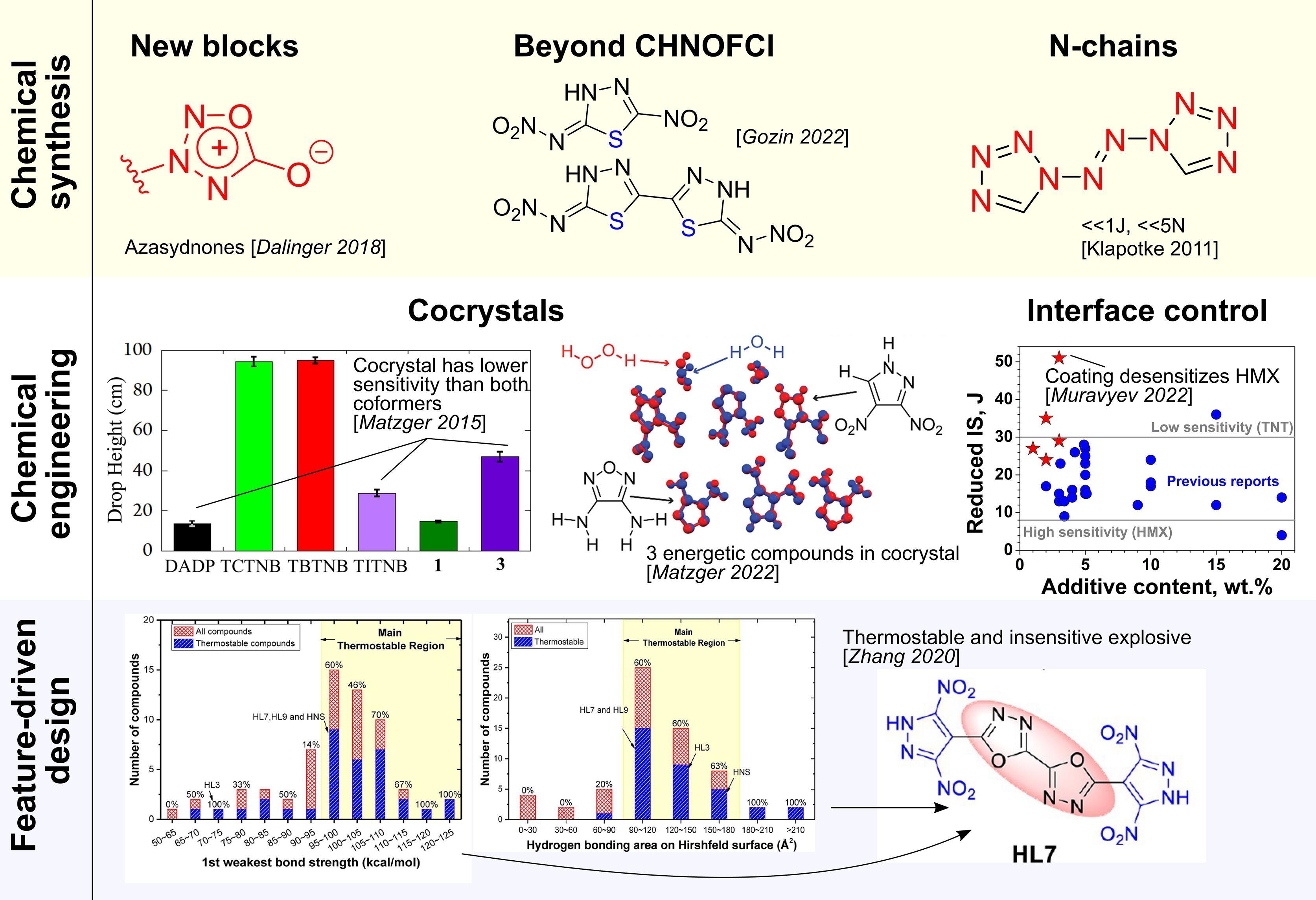In Figure 8, you integrate a wide spectrum of technologies, ranging from pressure-induced polymerization (PIP-1), mesoionic liquids (e.g., 3-methylazasydnone), to machine-learning-guided molecule generation, within a unified framework suggesting their equivalent contribution to advancing energetic materials. However, this conflation is highly problematic. Several of the included systems (e.g., PIP-1, C₂N₁₆, CHONF-rich cage compounds) lack any empirical detonation performance data (e.g., D, P_cj, Q), and in some cases even fail to meet the criteria for handling safety or synthesis reproducibility. On what basis did you determine their readiness for inclusion alongside experimentally validated materials like CL-20 cocrystals or melt-castable triazoles? More specifically, how do you reconcile the absence of thermomechanical characterization (e.g., DSC, drop weight impact, vacuum stability) for pressure-polymerized or AI-generated materials with their placement in a figure that implicitly suggests their practical relevance? Wouldn’t this visual equivalence risk misinforming the reader about the maturity and comparative significance of these disparate innovations?


